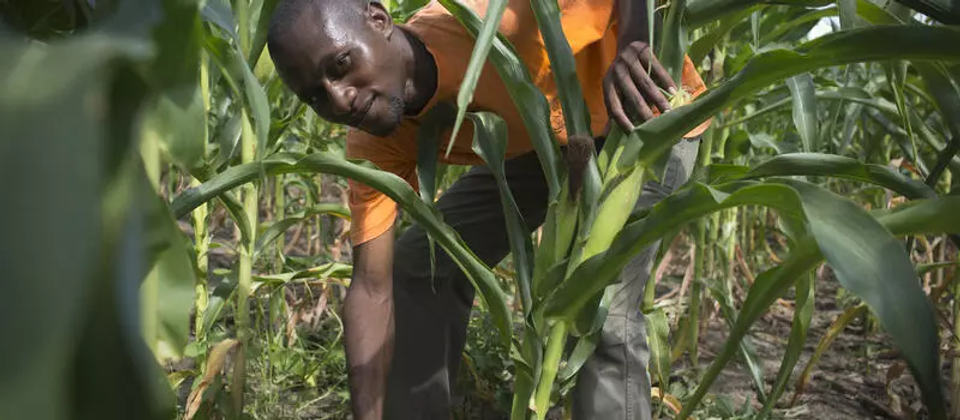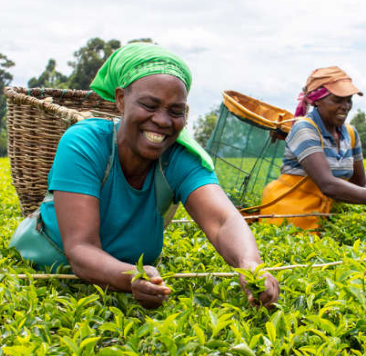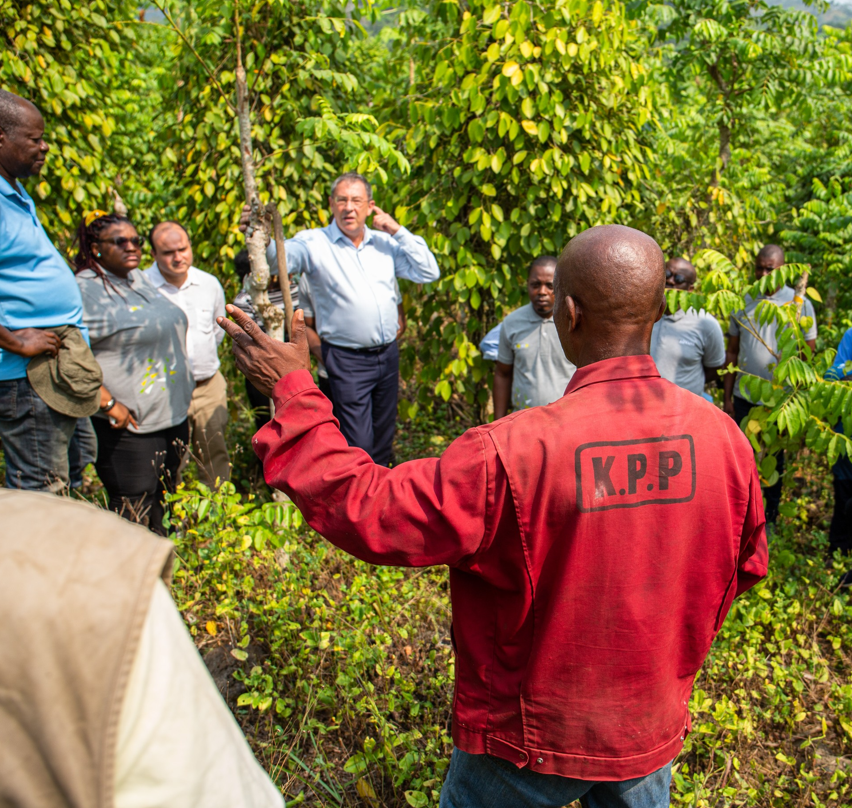
Photo: USAID / Joanne Lewa
In Africa, agriculture has been identified as a sector that could drive socioeconomic transformation and allow for broader participation of marginalized groups, women and youth in the economy. The sector holds considerable potential to provide decent and gainful employment opportunities to a large number of youth, if supported with increased investment and an enabling environment. Ensuring that agriculture-led economic development in Africa provides more and better economic opportunities for youth must be an essential focus of related investments for reducing poverty, inequality and low-quality employment.
Transformative potential of youth-inclusive, agriculture-led growth
For youth who are not inclined to work in primary agriculture production, including those without access to land and production resources, mobilization of support through government and the private sector could position them in non-farm activities that drive agricultural transformation and the improvement of rural markets. Examples include marketing and trading of agriculture-related products and value-added processing, as well as agriculture-related technology services. Involving youth in agribusiness, either through entrepreneurship or employment, is increasingly seen as a potential solution to unemployment, food insecurity and poverty. However, several barriers limit youth participation in agriculture and the broader agri-food system.
Challenges to access to finance for youth in agriculture
Often, financial institutions are constrained in lending to early stage enterprises or to female and young borrowers — both in agriculture and in other sectors — due to lack of knowledge and capacity on the financial institutions’ side, real and perceived risks, and high transaction costs. Another key constraint on the borrower’s side is the lack of fixed assets demanded as collateral from financial institutions.
Pressure on arable land is high in many parts of the world, making it difficult to have youth engage in primary agriculture. Youth often also lack access to finance necessary for agriculture due to the perceived risk by traditional lenders of being first-time borrowers in early stage businesses with no proven track record or tested business model. Youth usually are looking for small ticket sizes, which have high transaction costs. However, the same youth are, in many cases, the best innovators and early adopters, taking on risk such as in ag-tech (particularly in input and output supply chain digitization and precision agriculture) that are a source of climate-smart agricultural services.
A number of youth have recently won various innovation challenges. They have come up with innovative ideas, but they are unable to scale these due to lack of financing. Catalytic investments in the development of youth start-ups that can address the informational, logistical and financing gaps in the ecosystem have a crucial role to play in enhancing the scalability of ag-tech solutions.
Financing agricultural small and medium-sized enterprises (agri-SMEs) can unlock youth jobs and agriculture potential
However, the potential development impact of agri-SMEs remains unmet due to an estimated $65 billion annual financing gap, which translates to roughly three in four agri-SMEs lacking the finance they need to grow. Today, commercial engagement in financing agriculture remains limited. The amounts mobilized from the private sector by official development finance going toward the agriculture sector averaged $1.4 billion in 2019, which reflects 3% of the total amount mobilized in that year. Although agri-SME lending is often seen as unprofitable, this could change if the impact generated by these loans is considered. Because existing mechanisms for agricultural finance are not adequate, we need to design innovative and market-based approaches that are scalable and that can reach a large number of agri-SMEs and the missing middle. This calls for interventions that will catalyze the attraction of private investment in the agriculture value chain services that employ youth.
Finding the balance between development objectives and commercial returns is not unique to lending for agri-SMEs, or even to development-focused investment approaches more broadly. It helps to explain the financing gap to achieve the U.N. Sustainable Development Goals that were estimated at $2.5 trillion annually even before COVID-19 exacerbated poverty levels and reduced the risk appetite of capital providers. Unless capital markets can close this financing gap, the inclusion of youth in the agriculture sector will be slow, with a low pace of economic development already impacted by climatic and other shocks being felt today.
Blended finance can de-risk financing to strengthen inclusive markets
Blended finance is being used to solve or correct market failures in financing; it has already mobilized $140 billion in capital toward sustainable development in developing countries. Blended finance is also being used as a tool to de-risk financial institutions’ business models associated with serving high-risk borrowers or investments with high-impact potential in terms of social inclusion or environmental sustainability. Development finance institutions, such as the U.S. Development Finance Corporation, have already started designing impact-related lending programs, such as those embracing the 2X Challenge criteria for gender inclusion, widely adopted by leading international development financing institutions.
Blended finance models, coupled with technical assistance, can improve financial inclusion by increasing lending to specific targeted projects, such as women-owned and youth-led enterprises, initiatives or projects.
Data-driven, innovative finance solutions
The use of data-driven, innovative finance solutions to inform the design and use of public and private financing can help address some of the global financing challenges being faced by youth and other marginalized groups. The key to the success and adoption of the USAID Private Sector Engagement for Youth goal, “develop an implementation model that can be taken to scale,” will be based on documenting evidence that can serve to attract more private capital into the youth access to finance space — a data-driven approach to designing youth access to finance solutions for building a thriving and inclusive marketplace. To ensure the effectiveness and efficiency of blended finance tools, there is a need to engage investors and other key stakeholders of the targeted markets.
This article was originally published by Agrilinks.

